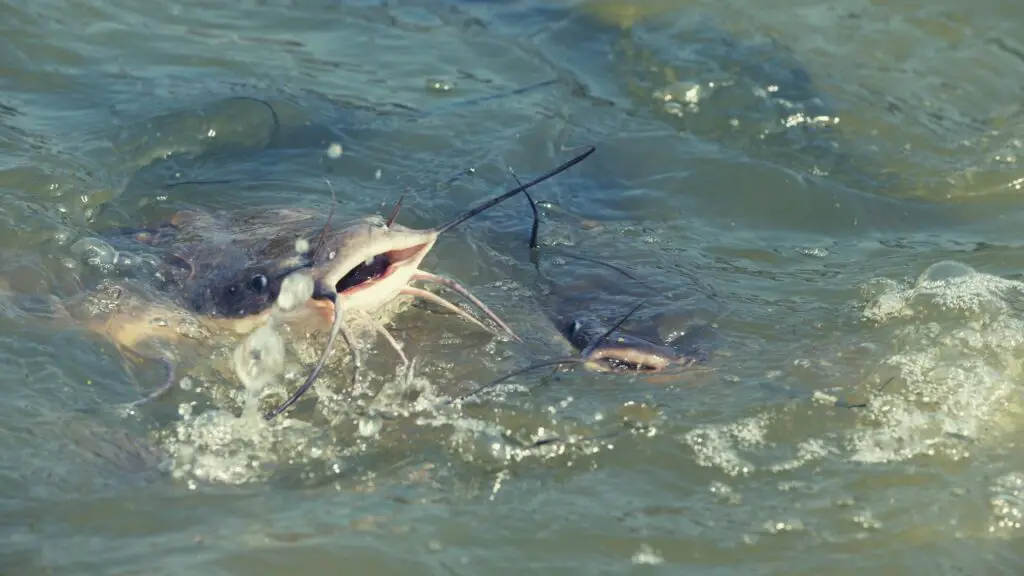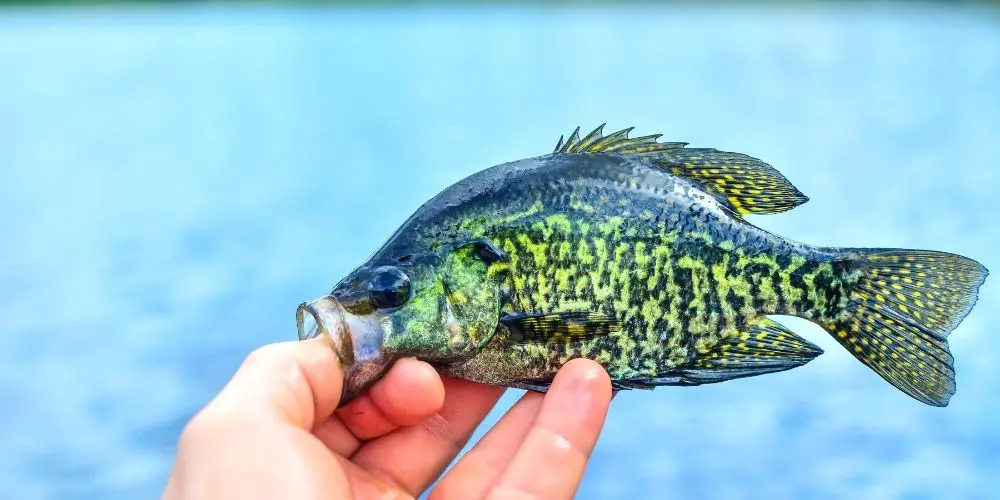When do catfish spawn? Catfish typically spawn during late spring and early summer, when water temperatures reach between 70°F and 85°F (21°C to 29°C). The exact timing varies depending on the catfish species and their geographic location, but generally, the spawning season occurs between May and August in the Northern Hemisphere. During this period, catfish lay their eggs in secluded, dark cavities and provide parental care until the eggs hatch, which usually takes about a week.
Hey there, fellow fish enthusiasts! As a passionate angler and lover of all things aquatic, I’ve always been fascinated by the mysterious world of catfish. These whiskered wonders are known for their secretive nature and unique spawning habits.
So, imagine my excitement when I set out on a quest to discover the answer to the burning question: when do catfish spawn? Let me tell you, the journey to uncover the secrets of catfish reproduction was nothing short of thrilling.
Are you ready to dive into the fascinating world of catfish spawning? Let’s go!
When Do Catfish Spawn?
Catfish, the fascinating bottom-dwellers with their characteristic whisker-like barbels, experience their spawning season during late spring and early summer. The exact timing depends on the species and their geographic location, but in general, the spawning season for these fish stretches between May and August in the Northern Hemisphere.
Water temperature plays a crucial role in triggering the spawning behavior in catfish. When the water temperature reaches between 70°F and 85°F (21°C to 29°C), the fish become more active and begin to search for suitable nesting sites to lay their eggs.
During the spawning season, male catfish become territorial and start preparing the nest, usually in a secluded and dark cavity such as a hollow log, undercut bank, or even man-made structures like submerged pipes.
The female catfish then lays her eggs, which can number in the thousands, depending on the species. The male takes on the responsibility of guarding the nest and providing parental care to the eggs, ensuring they receive enough oxygen by fanning them with his pectoral fins.
The eggs usually hatch within a week, after which the male continues to guard the newly hatched fry until they are ready to venture out on their own. This fascinating reproductive behavior showcases the remarkable parental instincts of catfish and contributes to their success as a species in various aquatic environments.

The Importance of Knowing When Catfish Spawn
As an avid catfish angler, knowing when catfish spawn can make all the difference in having a successful fishing trip. Without understanding when these fish are most active in their spawning process, you may waste countless hours trying to catch fish that aren’t interested in feeding.
It’s important to note that during the spawning period, catfish have one thing on their minds – reproduction. Therefore, they are much less likely to bite on bait since they are focused on mating.
Knowing when catfish spawn also allows you to be more mindful of the impact your fishing activities may have on their reproductive success. If you’re catching and releasing during this critical time, you could be causing harm to the future population of these amazing fish.
The Spawning Process
The spawning process for catfish is a fascinating one that can vary depending on the species and environmental conditions. Typically, male catfish will begin by finding and preparing a suitable nesting site.
They will create a depression or cavity in the riverbed or lake bottom where female catfish will deposit their eggs. Once the nest is ready, males will become highly territorial and aggressively defend it from other males who may try to invade their space.
When females arrive at the nest site, males will court them through various physical behaviors like nudging or rubbing against them until they are willing to lay eggs. After fertilization occurs (which takes place externally), males continue with guarding and fanning duties over the nest until hatching begins days later.
The Basics of Catfish Spawning
What Triggers Catfish to Spawn?
Catfish, like many other fish species, are triggered to spawn by changes in their environment. In particular, the lengthening of daylight hours in the spring triggers a hormonal response that leads to spawning behavior.
This is why catfish typically spawn during the late spring and early summer months. In addition to daylight hours, water temperature also plays a major role in triggering catfish spawning behavior.
Once water temperatures reach around 70 degrees Fahrenheit, catfish begin to actively seek out nesting sites and engage in courtship displays with potential mates.
Typical Spawning Behavior and Habitat Preferences
During the spawning process, male catfish will select and prepare a nest site for females to lay their eggs. These nests are typically located in areas with slow-moving currents and soft substrate like sand or mud.
Once a female enters the nest site, she will lay her eggs on the prepared surface while males fertilize them. After fertilization occurs, both male and female catfish may guard the nest site until hatching occurs. Catfish also exhibit unique behaviors during spawning season that can help anglers identify when they are active.
For example, they often become more active at night or during low-light conditions and may swim upstream towards their nesting locations. Overall, understanding these basic behaviors and preferences can help anglers identify prime fishing spots during catfish spawning season while also providing valuable insights into these fascinating creatures’ ecology.
Timing and Seasonality
Does Region Affect Catfish Spawning Times?
One of the most important things to understand when it comes to catfish spawning is that timing can vary considerably based on geographic location. In general, spawning occurs during the spring months, but the exact timing may shift by several weeks depending on where you live.
For instance, in southern states like Texas or Florida, catfish may begin spawning as early as February or March, while in more northern regions like Minnesota or Michigan, they may not begin to spawn until late April or early May.
It’s also worth noting that even within regions there can be significant differences based on factors like weather patterns and water temperature. For example, if there’s an unusually warm spell in late winter/early spring, catfish may start spawning earlier than expected.
Conversely, if there are sustained cold temperatures or a particularly harsh winter overall, they may delay their breeding season until conditions are more favorable.
Does Weather Affect Catfish Spawning Times?
So why exactly do these factors play such a big role in catfish breeding? Well for starters, water temperature is one of the primary triggers for spawning behavior. When water temperatures reach around 68-75°F (20-24°C), male catfish will typically begin building nests and courting females. Warmer water temperatures can stimulate this process earlier than expected.
However, even if the water is warm enough for breeding to occur normally during a particular time frame in your region (e.g., mid-March through mid-April), sudden changes like cold fronts can throw everything off-kilter. Catfish – particularly mature adults – are remarkably sensitive to environmental changes and may delay their breeding plans or abort them altogether if conditions become too unfavorable.
Overall then, understanding seasonal variations in weather patterns and water temperatures is critical for success in catfishing. Keeping a close eye on local forecasts and water conditions can help you identify when the best time to target these fish in your area is likely to be.
Does Moon Phases Affect Catfish Spawning?
Catfish spawning is a complex and fascinating process that is influenced by a multitude of factors. One such factor that has long been debated among anglers is the effect of lunar phases on catfish spawning behavior.
Many fishermen swear by fishing during a full moon, claiming that it increases their chances of catching catfish. But is there any scientific evidence to support this claim? Let’s take a closer look.
How Moon Phases Influence Catfish Spawning Behavior
The gravitational pull of the moon affects the tides and water levels, which in turn can influence catfish spawning behavior. During a full moon, for example, there may be more light available for catfish to see and navigate their surroundings.
This could potentially make it easier for them to find suitable spawning locations and attract mates. In addition, some studies have shown that certain species of fish are more likely to spawn during specific lunar phases.
For example, some researchers have found that channel catfish tend to spawn during or just after a full moon, while blue catfish prefer darker periods like new moons.
The Controversy Surrounding Full Moon Fishing
Despite the lack of concrete scientific evidence linking lunar phases to catfish spawning behavior, many anglers still believe in the power of fishing during a full moon. Some even go so far as to plan their fishing trips around lunar calendars or use specialized lures designed specifically for full moon fishing.
However, not everyone subscribes to this belief. Some fishermen argue that successful fishing trips are more about knowing where to look for feeding catfish than about timing your trip around lunar phases.
Others point out that other factors like weather patterns and water temperature may have a bigger impact on fish behavior than the phase of the moon.
My Take on Full Moon Fishing
As an experienced catfish angler, I have to say that I am somewhat skeptical of the supposed benefits of full moon fishing. While it’s certainly possible that lunar phases play a role in catfish spawning behavior, I think there are many other factors that are equally if not more important when it comes to catching fish.
That being said, I’m not opposed to trying new things and exploring different fishing techniques. If fishing during a full moon works for you and helps you catch more fish, then by all means go for it! At the end of the day, what matters most is enjoying your time on the water and having fun with this beloved pastime.
Unique Spawning Behaviors Among Different Species
The Blue Catfish: A Spawning Monolith
When it comes to catfish spawning, the blue catfish is a true behemoth. These fish can grow up to 100 pounds and are known for their impressive size and strength. But what really sets them apart is their unique spawning behaviors.
Unlike many other catfish species, blue catfish prefer to spawn in the main channel of rivers rather than in tributaries or backwaters. This means that anglers hoping to catch spawning blues will need to focus on deep, fast-moving water.
Another curious fact about blue catfish spawning is that they tend to be more active during the day than at night. This makes them somewhat easier to target for daytime anglers, although it’s worth noting that blues can still be caught at night during the spawn.
The Flathead Catfish: A Mysterious Spawner
Flathead catfish are notoriously difficult to catch during the spawn, in part because they tend to be very secretive about where they lay their eggs. Unlike some other species of catfish that build nests out of debris or vegetation, flatheads often lay their eggs in natural cavities such as old logs or rocks.
This can make it challenging for anglers looking specifically for spawning flatheads, as there may not be any visible signs of nesting activity. In addition, flatheads tend to become very territorial during the spawn and may become less interested in biting on baited hooks as they focus on guarding their eggs.
The Channel Catfish: A Versatile Spawner
Of all the different species of catfish found in North America, channel cats are perhaps the most adaptable when it comes to spawning behavior. While some channels will build nests similar to those constructed by other species of catfish, others may simply seek out holes or depressions in the river bottom where they can deposit their eggs.
One interesting aspect of channel catfish spawning is that they are more likely to initiate the process after a period of high water or flooding. This may be because the increased flow and turbulence helps to oxygenate the water and create ideal conditions for egg development.
Frequently Asked Questions
What is the best month to catch catfish?
The best month to catch catfish varies by location and water temperature, but generally, late spring to early summer is considered ideal. This period typically spans from May through June in many regions. During these months, water temperatures are warming up, which increases catfish activity and feeding as they prepare for the spawning season. Anglers find success during these months because catfish are more aggressive and likely to bite on baits due to their increased metabolic rates and the need to consume more food before spawning.
What month do catfish start spawning?
Catfish typically start spawning when water temperatures reach about 70 to 85 degrees Fahrenheit (21 to 29 degrees Celsius). This usually occurs in late spring or early summer, often between May and July, depending on the geographic location and the specific water body’s temperature.
The spawning season can vary by a few weeks based on the climate, water depth, and local weather patterns, making it important for anglers to monitor water temperatures for optimal fishing times.
What time are catfish most active?
Catfish are most active during the early morning hours, late evening, and at night. These periods of low light offer catfish, which are opportunistic predators with highly developed senses of smell and taste, an advantage in hunting for food.
Nighttime, in particular, is an excellent time for fishing for catfish because they are more likely to venture into shallower waters to feed. The reduced light and cooler temperatures also make them less wary of predators, including anglers.
Do catfish spawn shallow or deep?
Catfish typically spawn in shallow areas. They prefer nesting in protected, secluded spots where the water is warmer and more stable. These areas can include the backwaters of rivers, shallow bays of lakes, and flooded terrestrial vegetation where the male catfish can guard the nest and eggs.
The preferred spawning depth varies among species but is generally between 1 and 4 feet (0.3 to 1.2 meters), where the male catfish clears a nest in a cavity or under a bank and the female lays her eggs.
Do catfish bite more at night or day?
Catfish are generally more active and bite more at night. Their biology is suited to low-light conditions, allowing them to take advantage of cooler temperatures and decreased visibility to hunt more effectively.
At night, catfish will often move into shallower waters to feed, making them more accessible to anglers. While catfish can be caught during the day, especially in cloudy or murky water conditions, nighttime is widely regarded as the best time to target them.
Do catfish bite during spawn?
Yes, catfish do bite during the spawn, but their behavior can be more unpredictable. While male catfish are primarily focused on protecting nests and may be less inclined to feed, they will still bite if provoked by an intruding bait or lure.
Female catfish, after laying their eggs, may be more aggressive and likely to bite as they recover from spawning and resume feeding. However, the overall catch rates might be lower during the spawn as catfish are more focused on reproductive activities than feeding.
Anglers targeting catfish during the spawn may need to adjust their strategies, such as fishing closer to spawning nests or using baits that mimic natural prey in the area.
Final Thoughts
To wrap up, if you’re looking to catch more catfish, it’s really helpful to know when they spawn. This usually happens in late spring to early summer when the water gets warm, between 70 and 85 degrees Fahrenheit. During this time, catfish act differently because they’re busy making nests in shallow, warm water.
Although they might not chase after bait as much because they’re focused on laying eggs, you can still catch them. Fishing at night is often the best time since catfish are out and about, looking for food in cooler temperatures.
If you adjust how you fish, like choosing spots where catfish are likely to make their nests and picking the right kind of bait, you can still have great fishing trips during the spawn. Understanding when and how catfish spawn doesn’t just help you catch more fish; it also lets you see how interesting and complex these creatures are.



